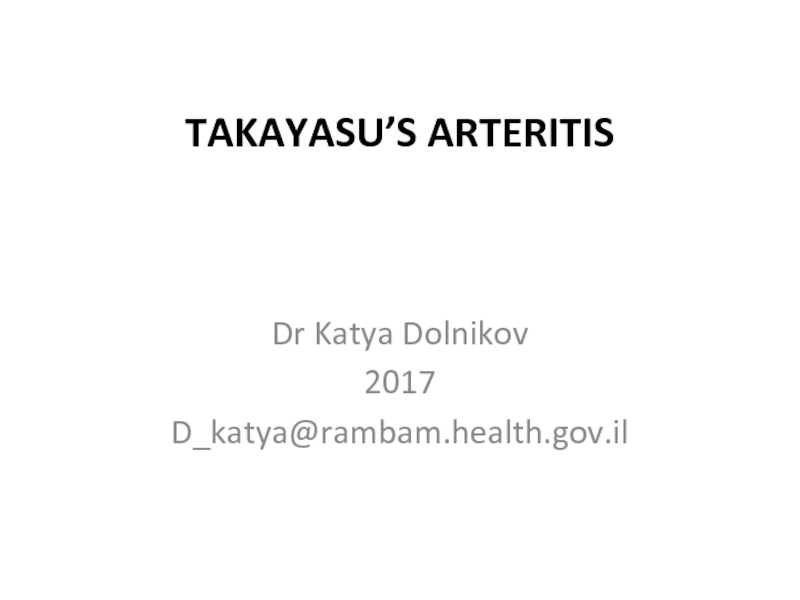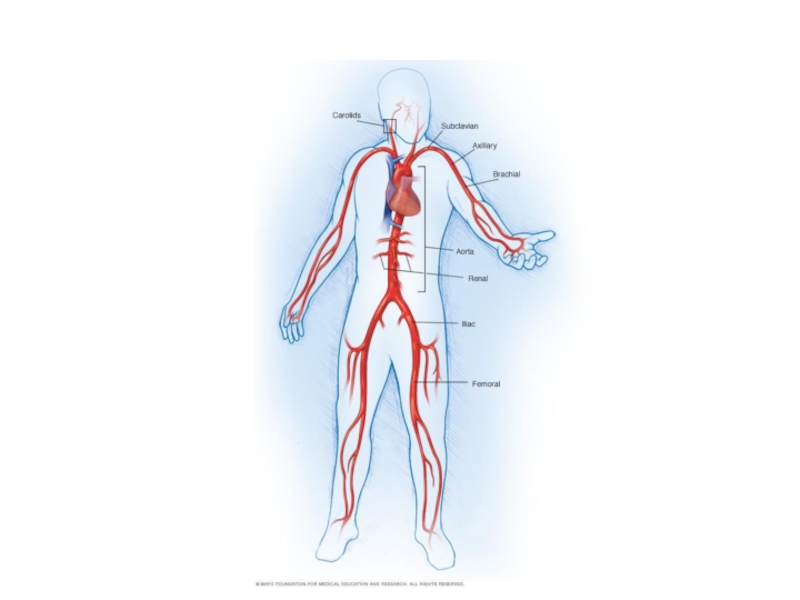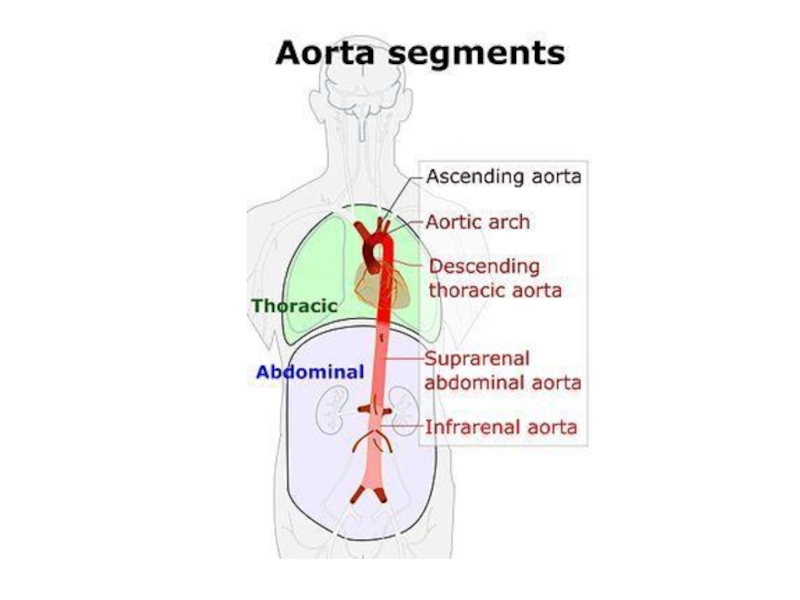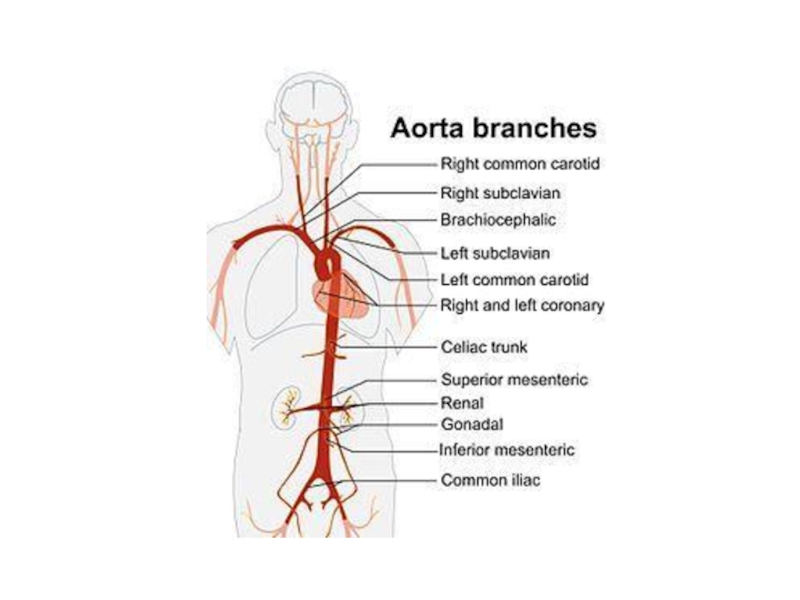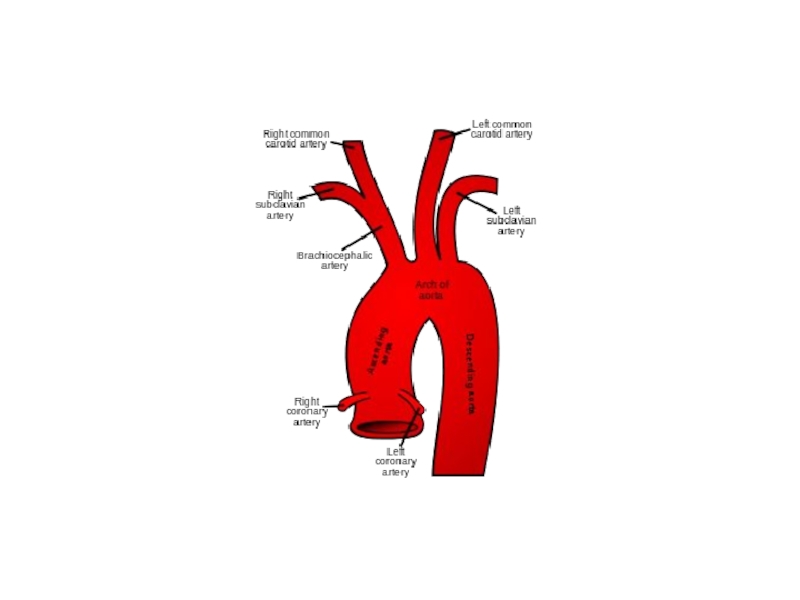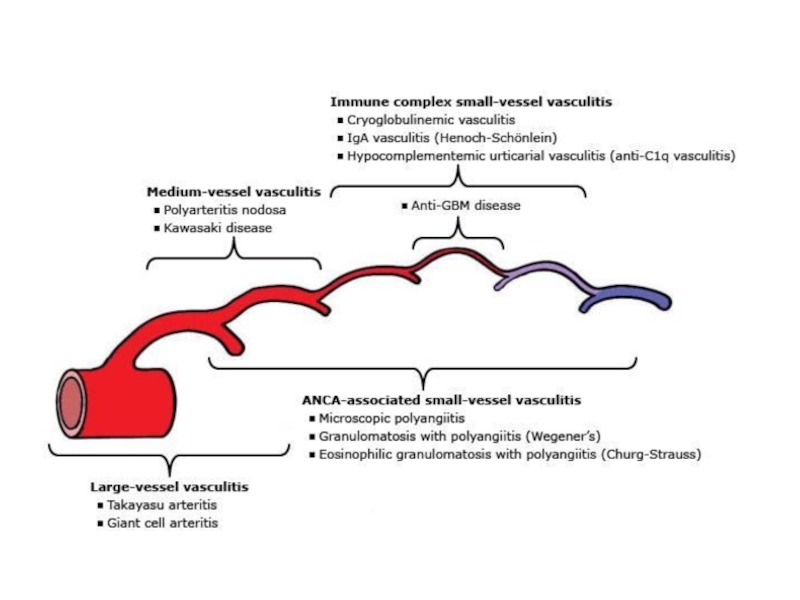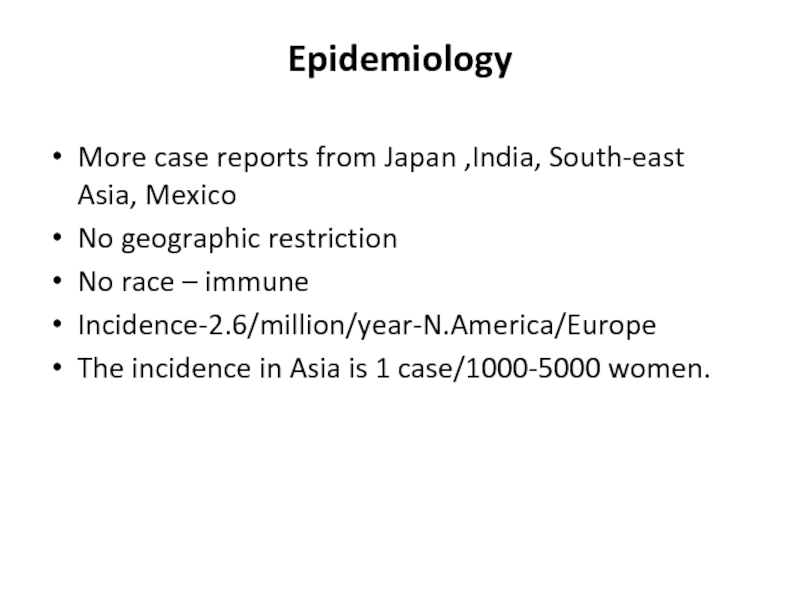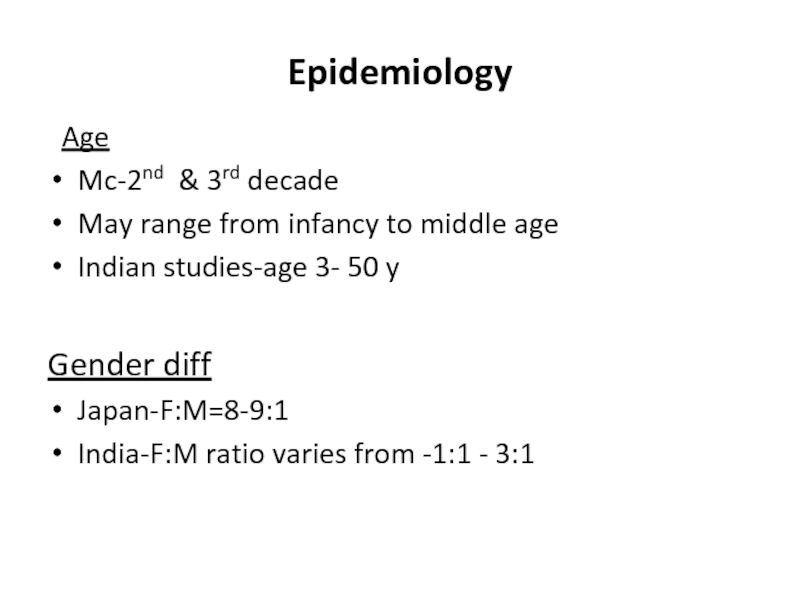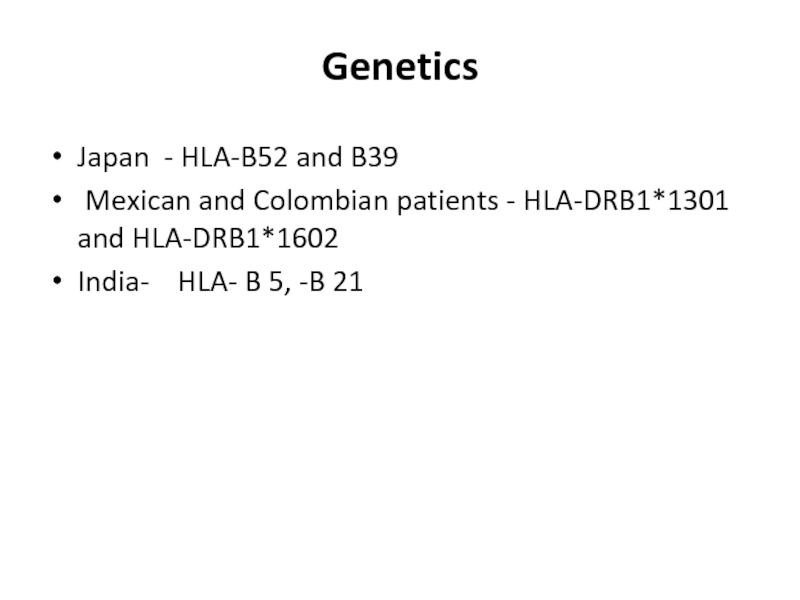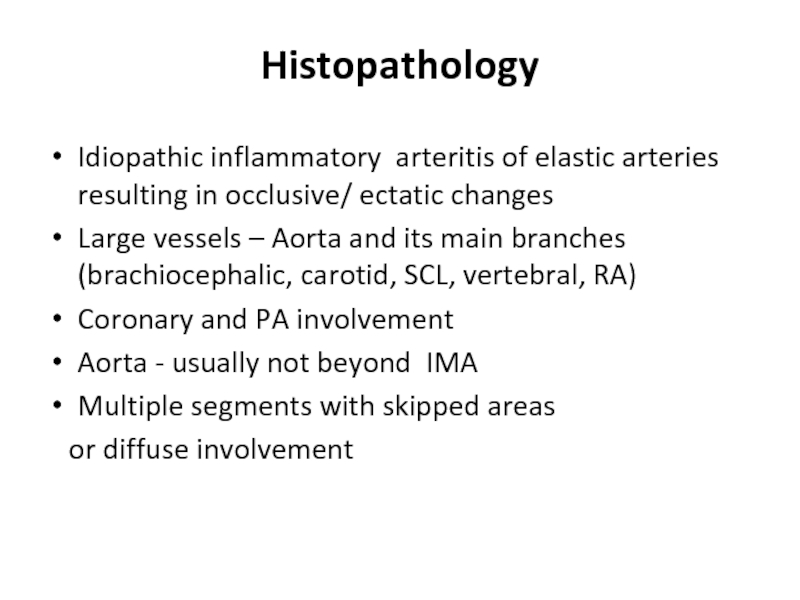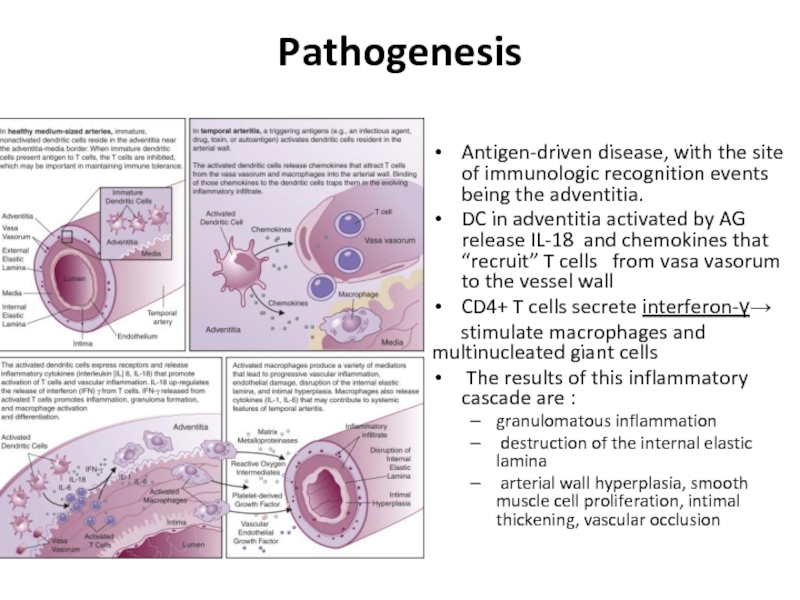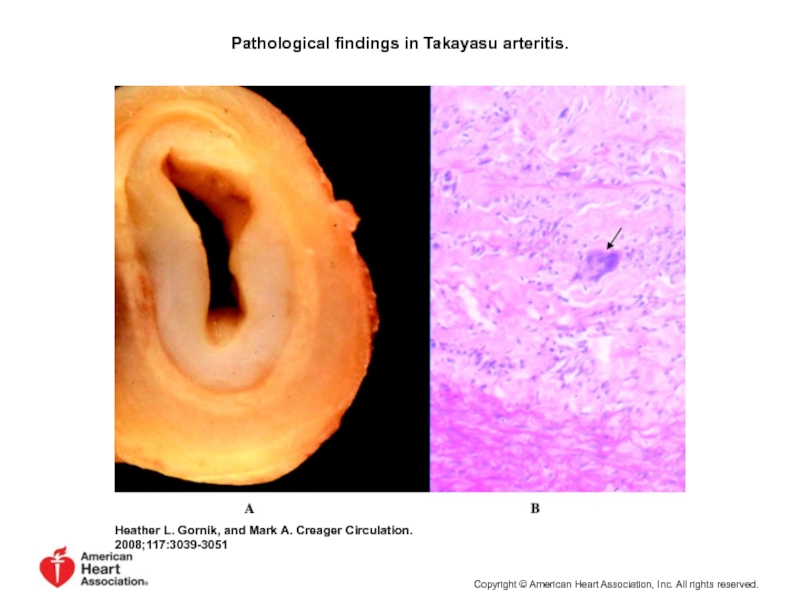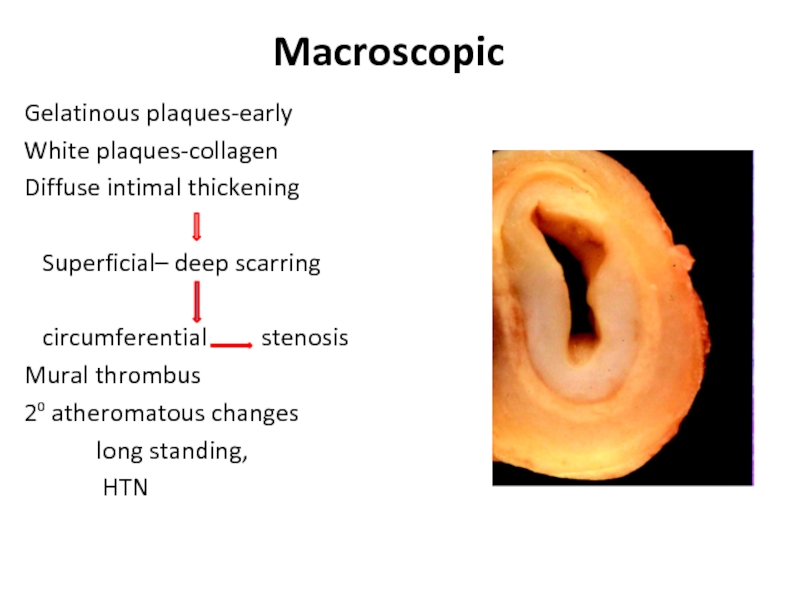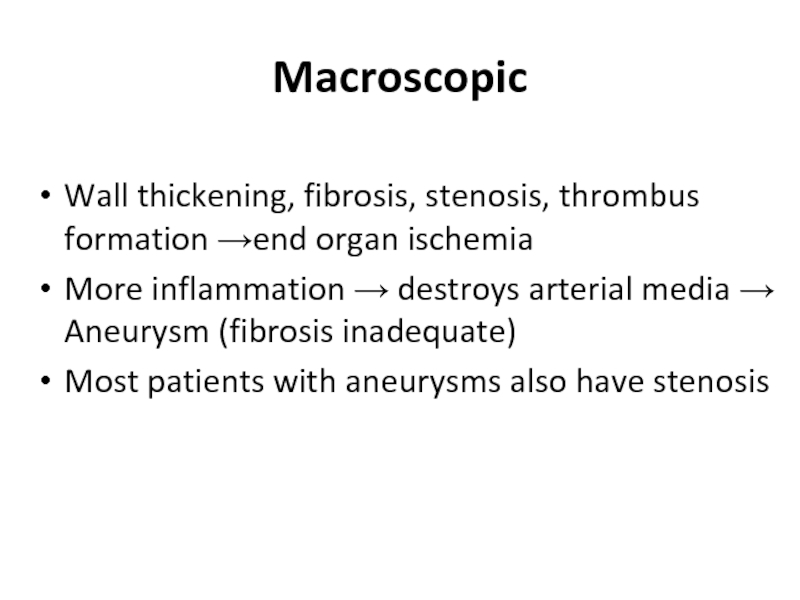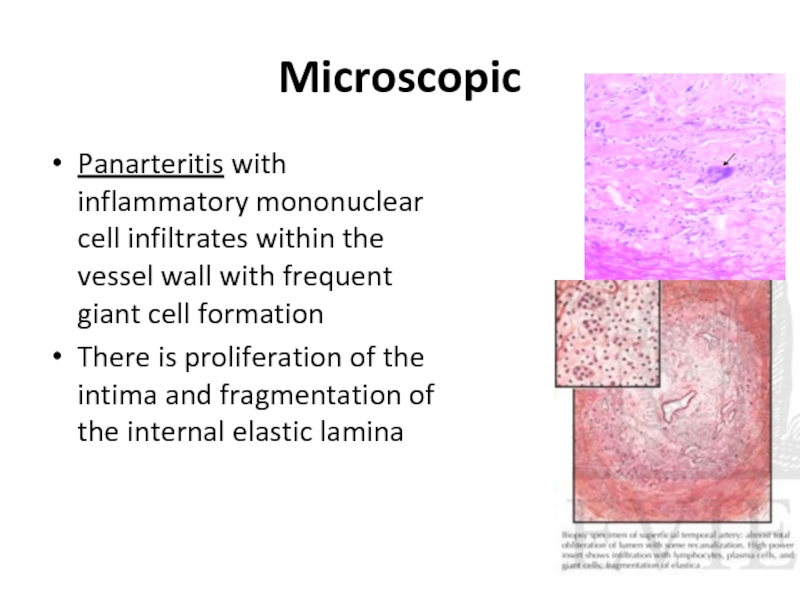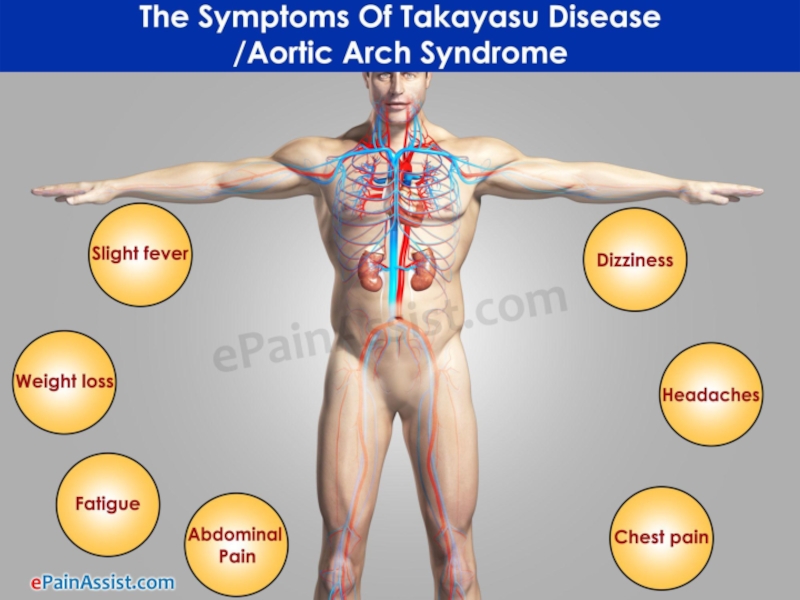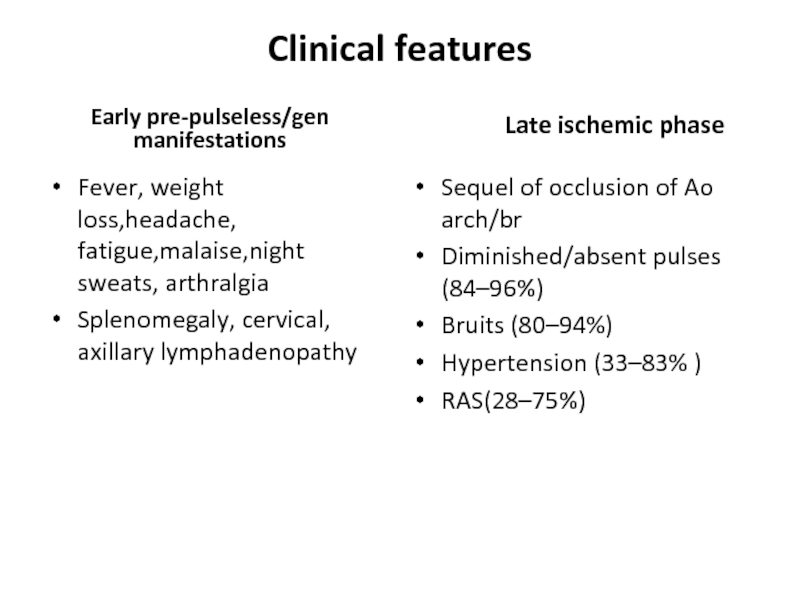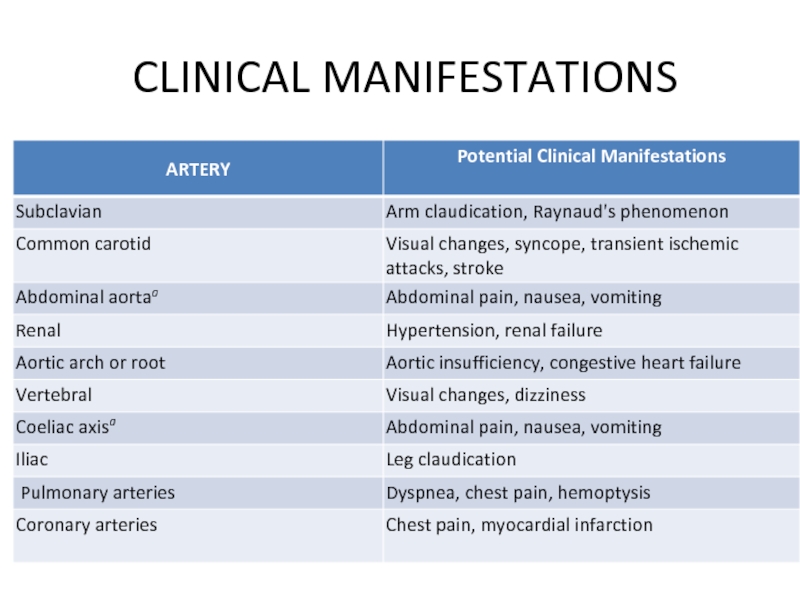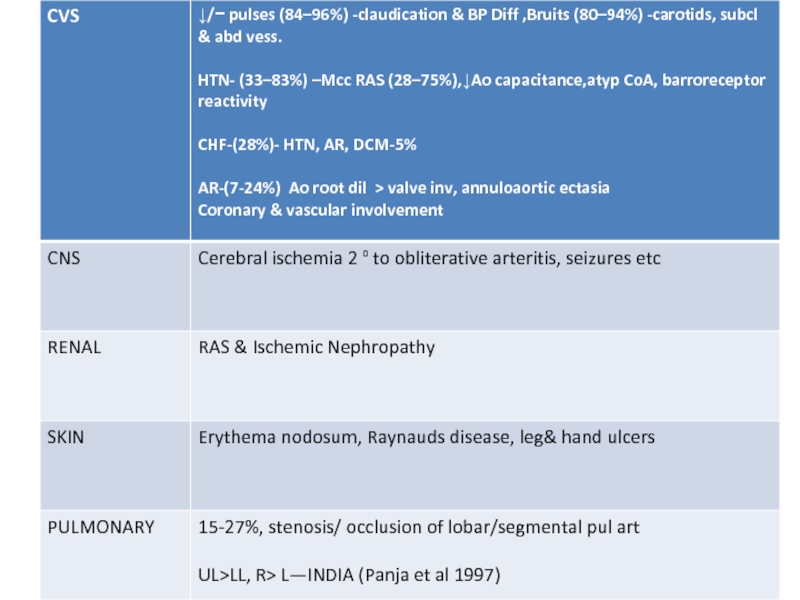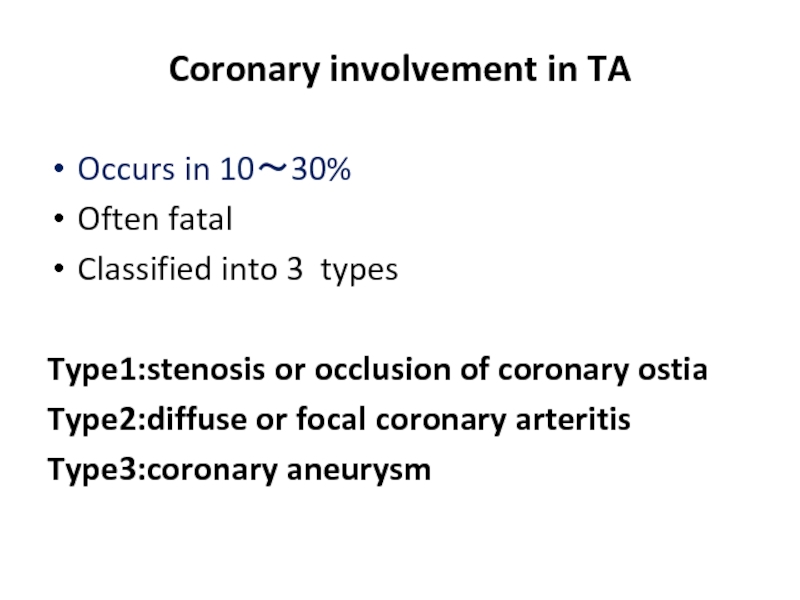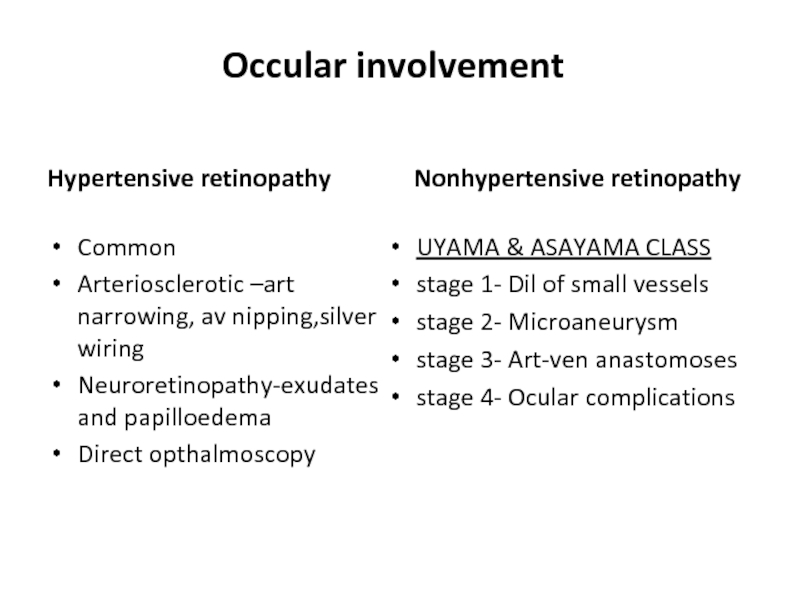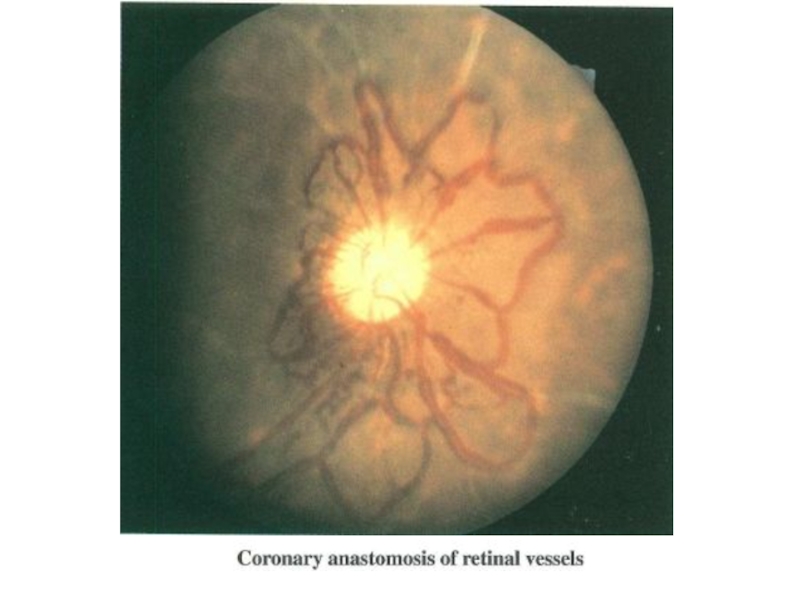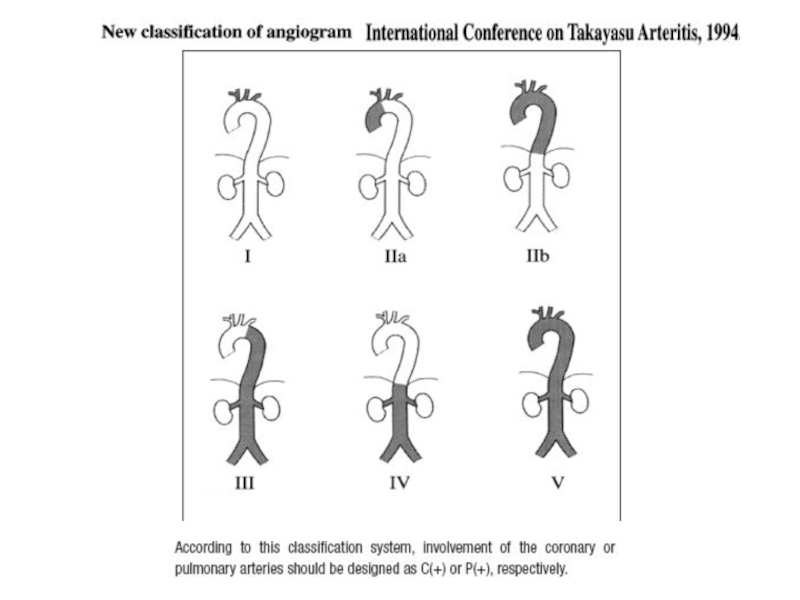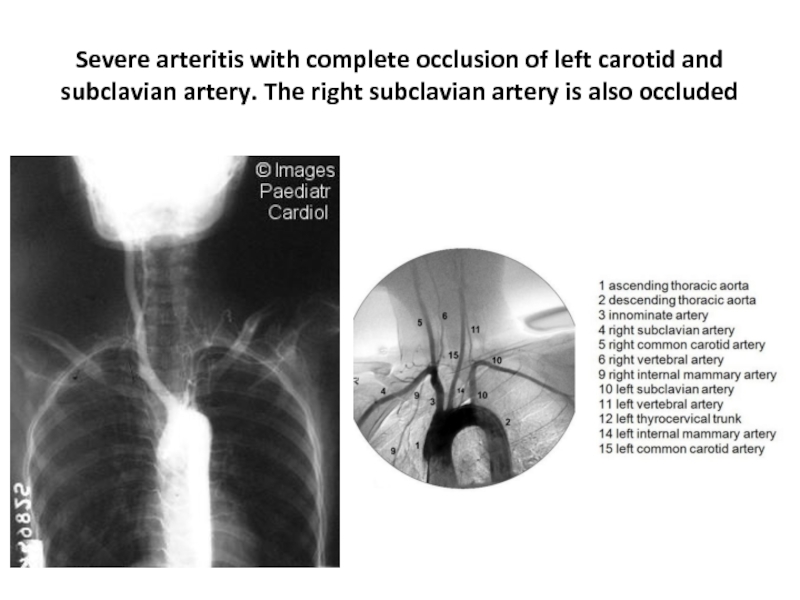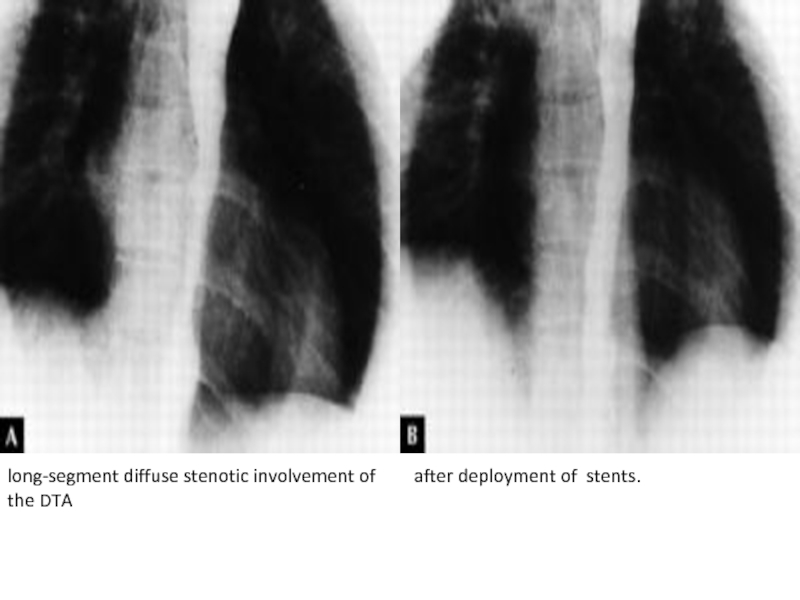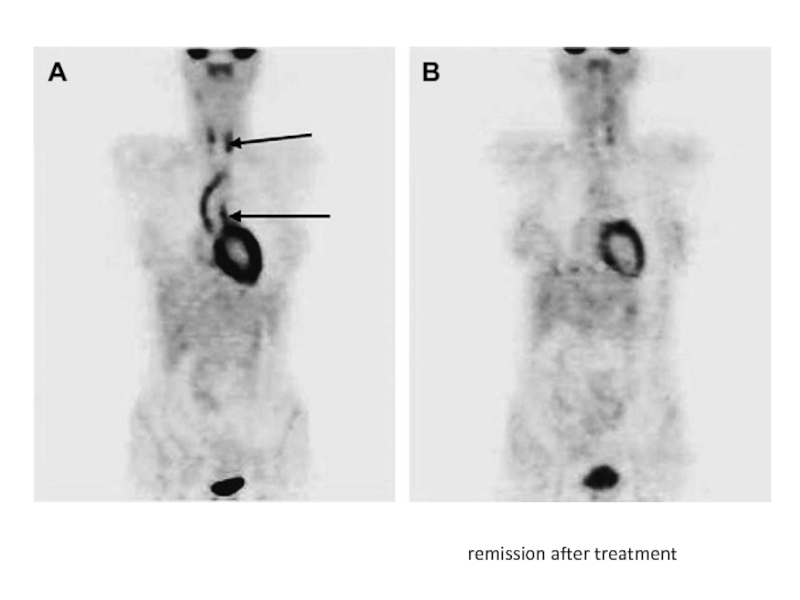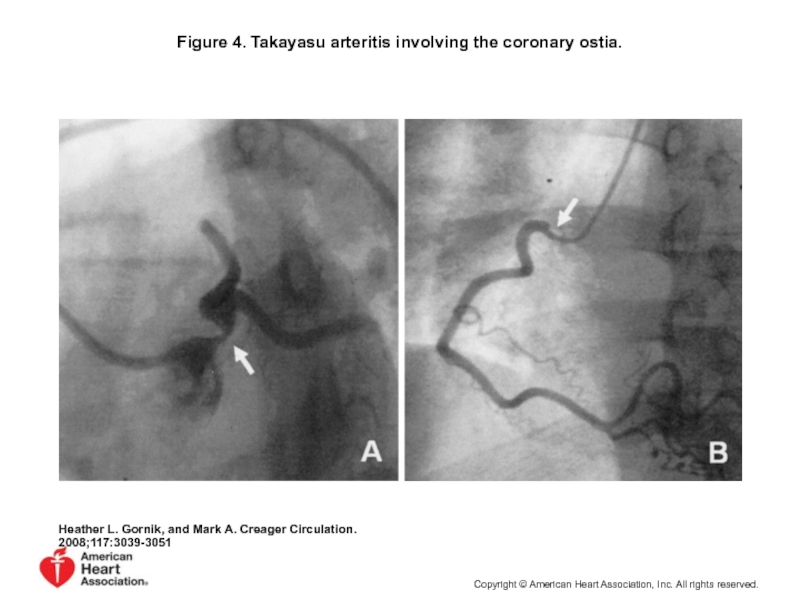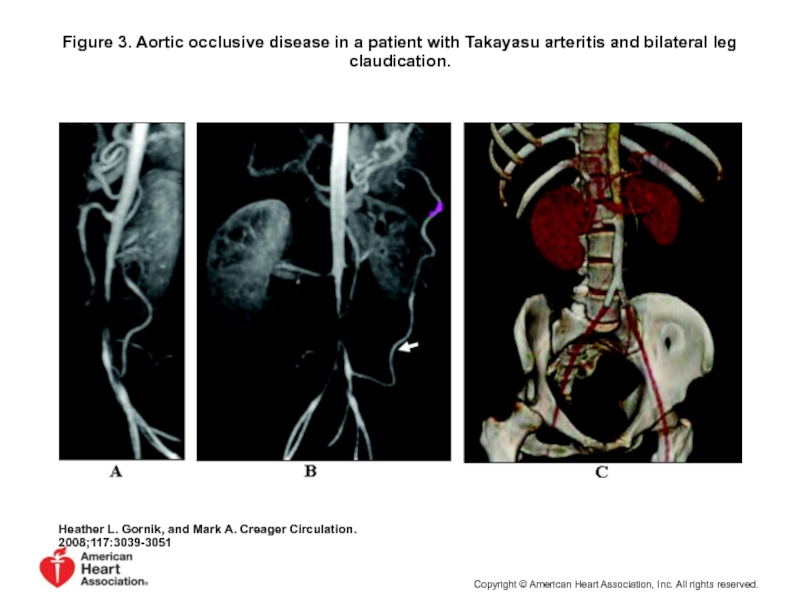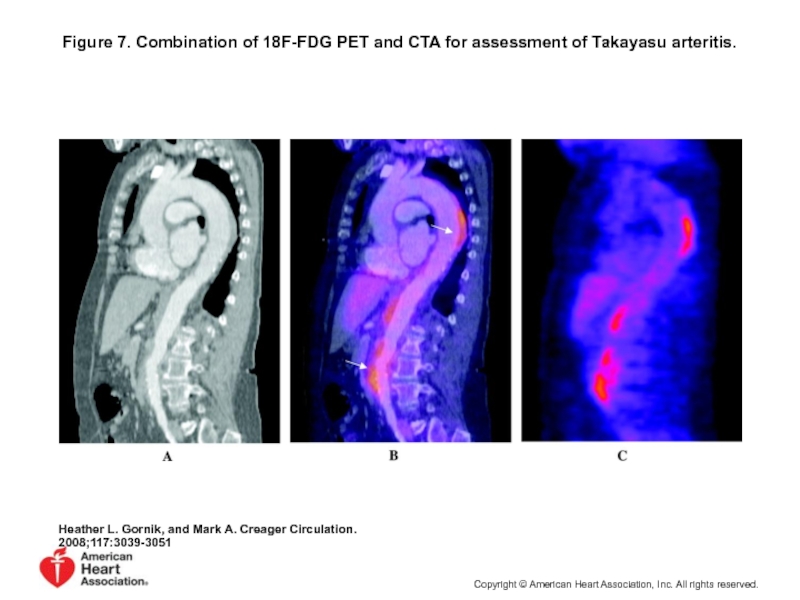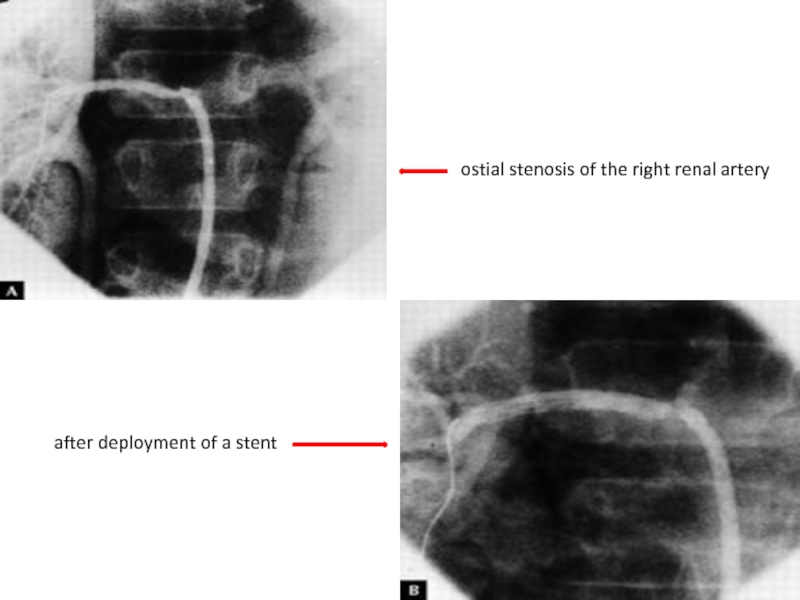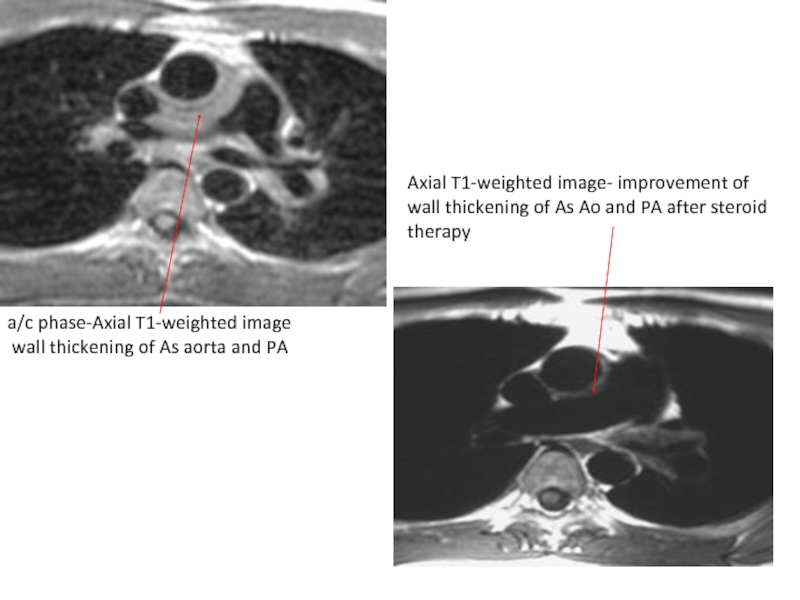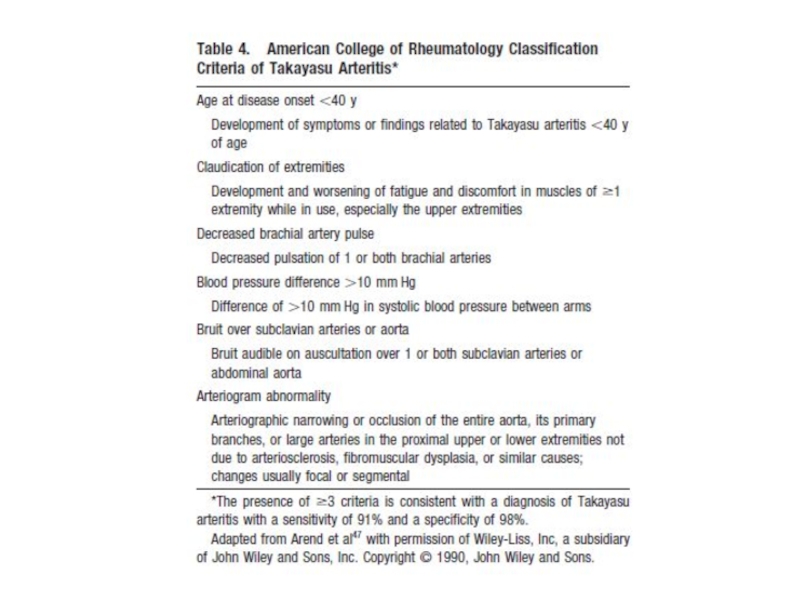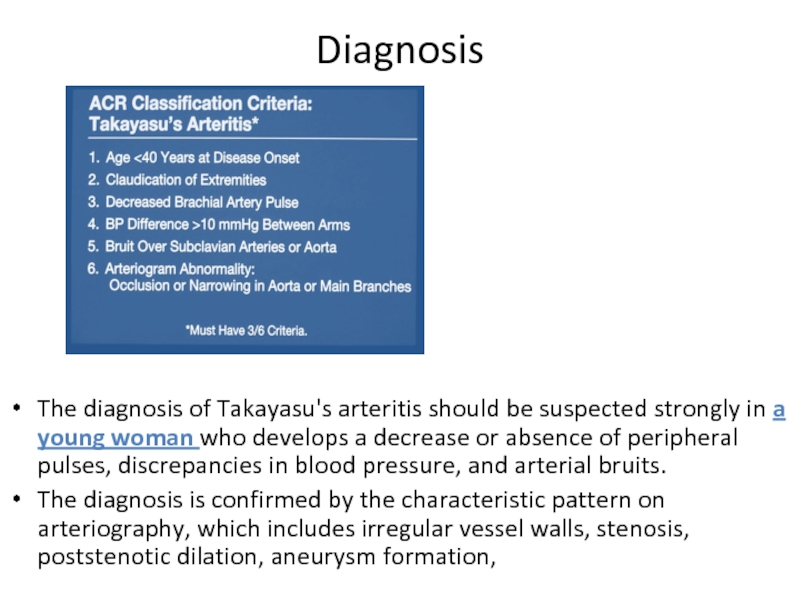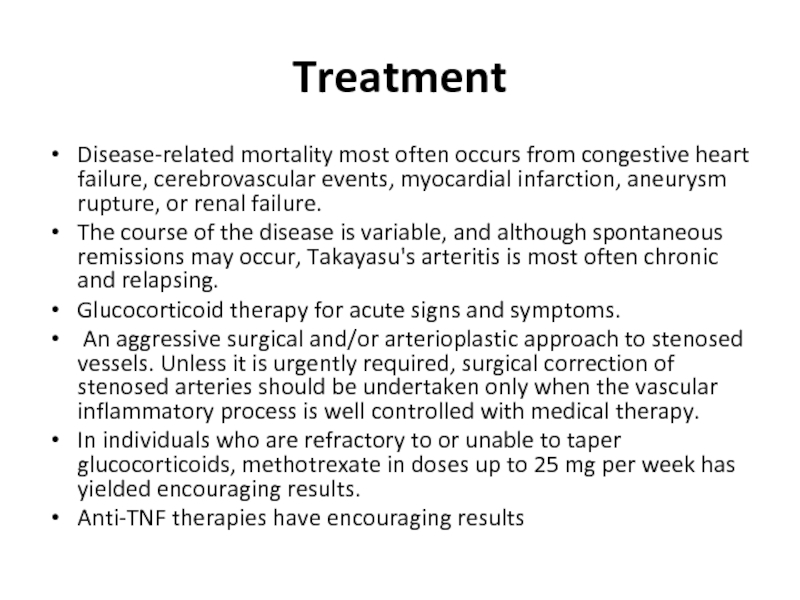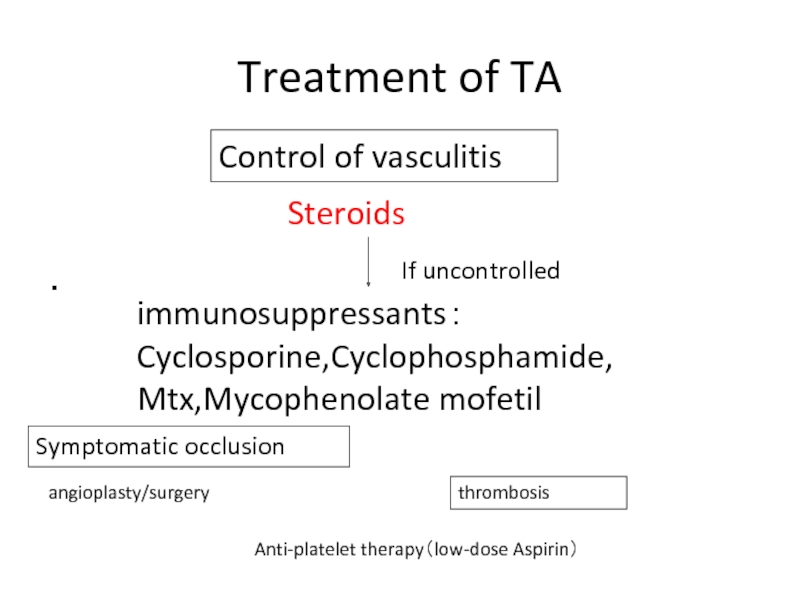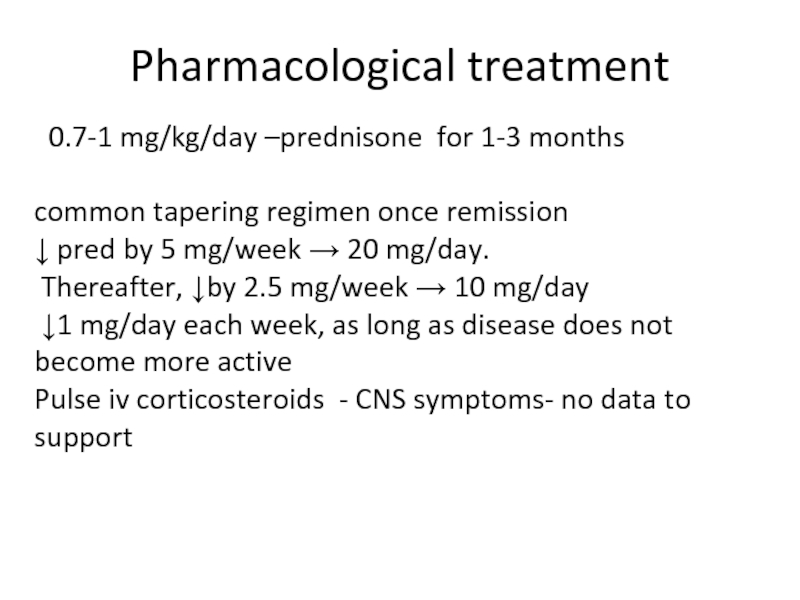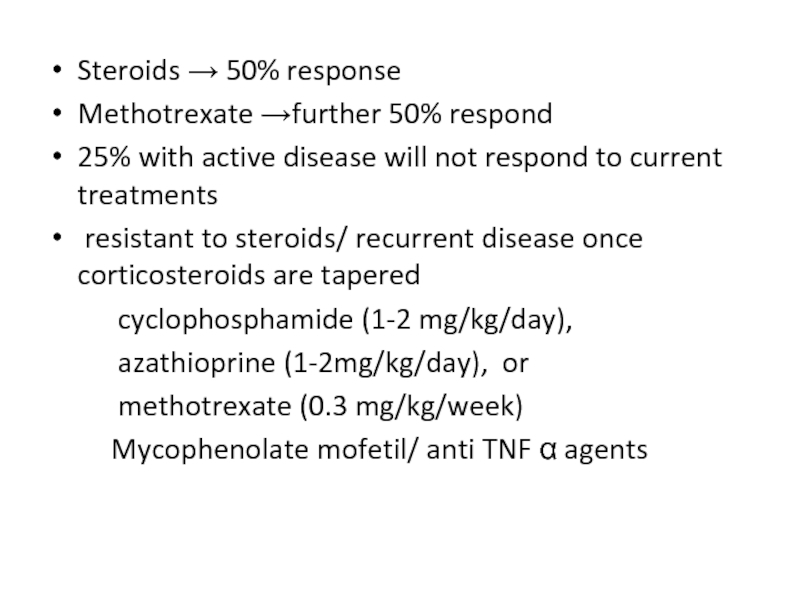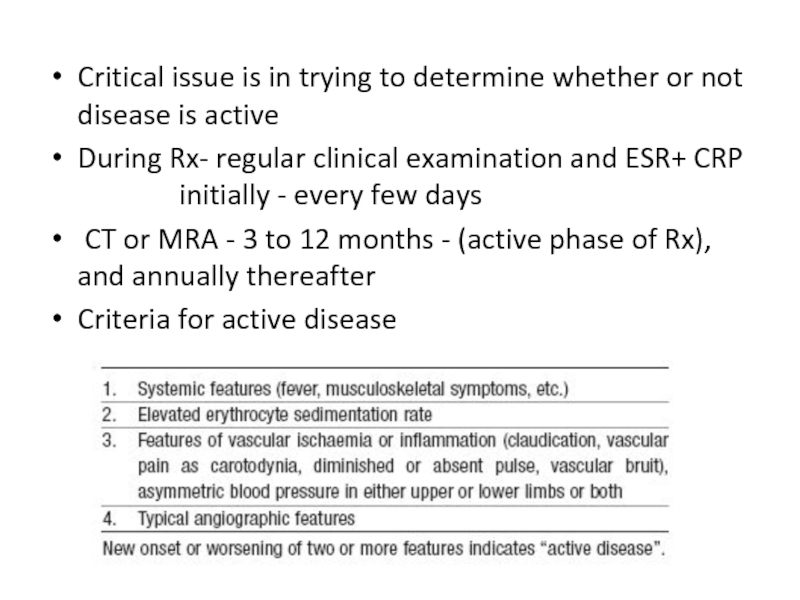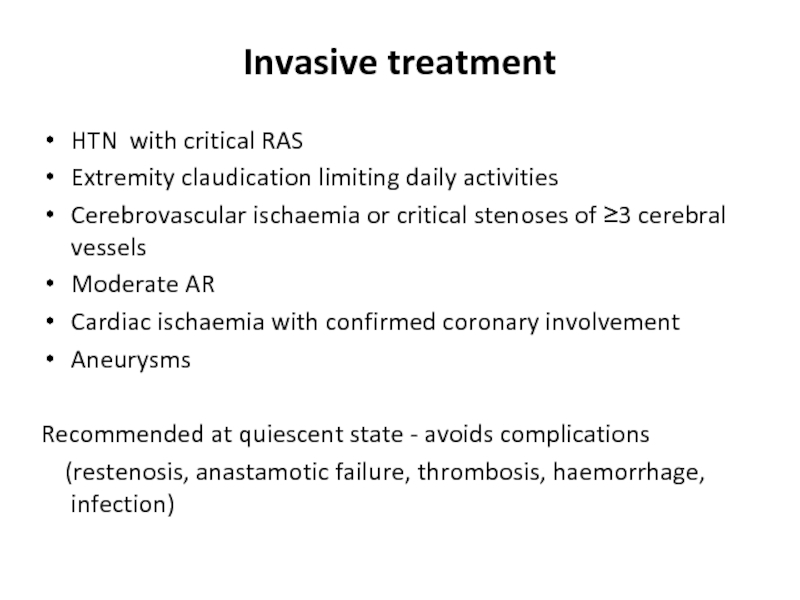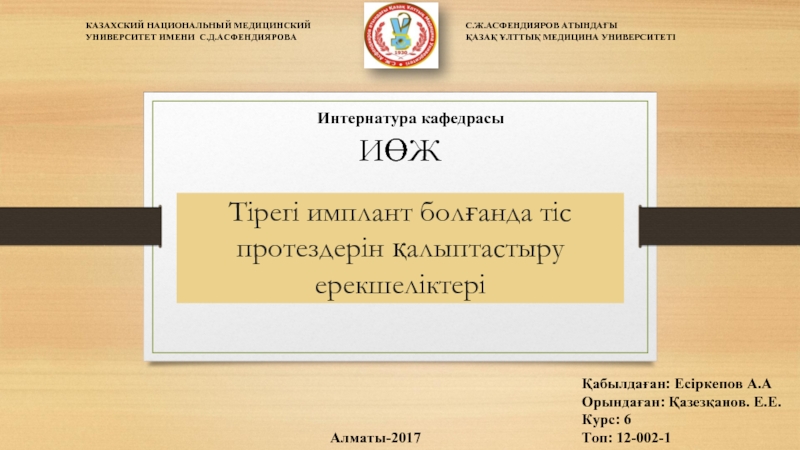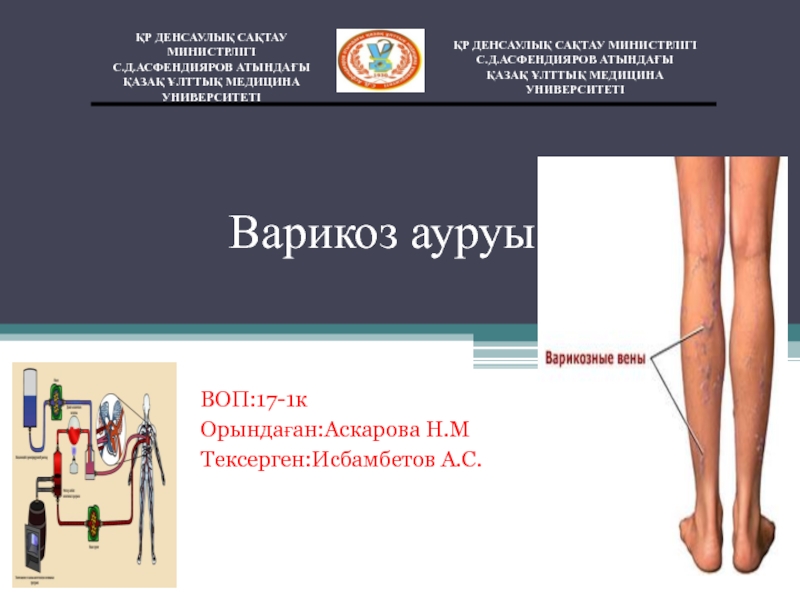- Главная
- Разное
- Дизайн
- Бизнес и предпринимательство
- Аналитика
- Образование
- Развлечения
- Красота и здоровье
- Финансы
- Государство
- Путешествия
- Спорт
- Недвижимость
- Армия
- Графика
- Культурология
- Еда и кулинария
- Лингвистика
- Английский язык
- Астрономия
- Алгебра
- Биология
- География
- Детские презентации
- Информатика
- История
- Литература
- Маркетинг
- Математика
- Медицина
- Менеджмент
- Музыка
- МХК
- Немецкий язык
- ОБЖ
- Обществознание
- Окружающий мир
- Педагогика
- Русский язык
- Технология
- Физика
- Философия
- Химия
- Шаблоны, картинки для презентаций
- Экология
- Экономика
- Юриспруденция
Takayasu’s arteritis презентация
Содержание
- 1. Takayasu’s arteritis
- 7. Epidemiology More case reports from Japan ,India,
- 8. Age Mc-2nd & 3rd decade May
- 10. Histopathology Idiopathic inflammatory arteritis of elastic arteries
- 11. Pathogenesis Antigen-driven disease, with the site
- 12. Pathological findings in Takayasu arteritis. Heather
- 13. Macroscopic Gelatinous plaques-early White plaques-collagen Diffuse intimal
- 14. Macroscopic Wall thickening, fibrosis, stenosis, thrombus
- 15. Microscopic Panarteritis with inflammatory mononuclear cell infiltrates
- 17. Clinical features Early pre-pulseless/gen manifestations Fever, weight
- 18. CLINICAL MANIFESTATIONS
- 20. Coronary involvement in TA Occurs in
- 21. Occular involvement Hypertensive retinopathy Common Arteriosclerotic –art
- 23. nee
- 24. Severe arteritis with complete occlusion of left
- 25. long-segment diffuse stenotic involvement of the DTA after deployment of stents.
- 26. remission after treatment
- 27. Figure 4. Takayasu arteritis involving the coronary
- 28. Figure 3. Aortic occlusive disease in a
- 29. Figure 7. Combination of 18F-FDG PET and
- 30. ostial stenosis of the right renal artery after deployment of a stent
- 31. a/c phase-Axial T1-weighted image
- 33. Diagnosis The diagnosis of Takayasu's
- 34. Treatment Disease-related mortality most often occurs
- 35. Treatment of TA ・ Steroids
- 36. Pharmacological treatment 0.7-1 mg/kg/day –prednisone
- 37. Steroids → 50% response Methotrexate →further
- 38. Critical issue is in trying to
- 39. Invasive treatment HTN with critical RAS Extremity
Слайд 7Epidemiology
More case reports from Japan ,India, South-east Asia, Mexico
No geographic restriction
No
Incidence-2.6/million/year-N.America/Europe
The incidence in Asia is 1 case/1000-5000 women.
Слайд 8 Age
Mc-2nd & 3rd decade
May range from infancy to middle age
Indian
Gender diff
Japan-F:M=8-9:1
India-F:M ratio varies from -1:1 - 3:1
Epidemiology
Слайд 9
Japan - HLA-B52 and B39
Mexican and Colombian patients - HLA-DRB1*1301 and HLA-DRB1*1602
India- HLA- B 5, -B 21
Слайд 10Histopathology
Idiopathic inflammatory arteritis of elastic arteries resulting in occlusive/ ectatic changes
Large
Coronary and PA involvement
Aorta - usually not beyond IMA
Multiple segments with skipped areas
or diffuse involvement
Слайд 11Pathogenesis
Antigen-driven disease, with the site of immunologic recognition events being
DC in adventitia activated by AG release IL-18 and chemokines that “recruit” T cells from vasa vasorum to the vessel wall
CD4+ T cells secrete interferon-γ→
stimulate macrophages and multinucleated giant cells
The results of this inflammatory cascade are :
granulomatous inflammation
destruction of the internal elastic lamina
arterial wall hyperplasia, smooth muscle cell proliferation, intimal thickening, vascular occlusion
Слайд 12Pathological findings in Takayasu arteritis.
Heather L. Gornik, and Mark A.
Copyright © American Heart Association, Inc. All rights reserved.
Слайд 13Macroscopic
Gelatinous plaques-early
White plaques-collagen
Diffuse intimal thickening
Superficial– deep scarring
circumferential
Mural thrombus
2⁰ atheromatous changes
long standing,
HTN
Слайд 14Macroscopic
Wall thickening, fibrosis, stenosis, thrombus formation →end organ ischemia
More inflammation →
Most patients with aneurysms also have stenosis
Слайд 15Microscopic
Panarteritis with inflammatory mononuclear cell infiltrates within the vessel wall with
There is proliferation of the intima and fragmentation of the internal elastic lamina
Слайд 17Clinical features
Early pre-pulseless/gen manifestations
Fever, weight loss,headache, fatigue,malaise,night sweats, arthralgia
Splenomegaly, cervical, axillary
Late ischemic phase
Sequel of occlusion of Ao arch/br
Diminished/absent pulses (84–96%)
Bruits (80–94%)
Hypertension (33–83% )
RAS(28–75%)
Слайд 20Coronary involvement in TA
Occurs in 10~30%
Often fatal
Classified into 3 types
Type1:stenosis or
Type2:diffuse or focal coronary arteritis
Type3:coronary aneurysm
Слайд 21Occular involvement
Hypertensive retinopathy
Common
Arteriosclerotic –art narrowing, av nipping,silver wiring
Neuroretinopathy-exudates and papilloedema
Direct opthalmoscopy
Nonhypertensive
UYAMA & ASAYAMA CLASS
stage 1- Dil of small vessels
stage 2- Microaneurysm
stage 3- Art-ven anastomoses
stage 4- Ocular complications
Слайд 24Severe arteritis with complete occlusion of left carotid and subclavian artery.
Слайд 27Figure 4. Takayasu arteritis involving the coronary ostia.
Heather L. Gornik,
Copyright © American Heart Association, Inc. All rights reserved.
Слайд 28Figure 3. Aortic occlusive disease in a patient with Takayasu arteritis
Heather L. Gornik, and Mark A. Creager Circulation. 2008;117:3039-3051
Copyright © American Heart Association, Inc. All rights reserved.
Слайд 29Figure 7. Combination of 18F-FDG PET and CTA for assessment of
Heather L. Gornik, and Mark A. Creager Circulation. 2008;117:3039-3051
Copyright © American Heart Association, Inc. All rights reserved.
Слайд 31
a/c phase-Axial T1-weighted image
wall thickening of As aorta and
Axial T1-weighted image- improvement of wall thickening of As Ao and PA after steroid therapy
Слайд 33Diagnosis
The diagnosis of Takayasu's arteritis should be suspected strongly in a
The diagnosis is confirmed by the characteristic pattern on arteriography, which includes irregular vessel walls, stenosis, poststenotic dilation, aneurysm formation,
Слайд 34Treatment
Disease-related mortality most often occurs from congestive heart failure, cerebrovascular
The course of the disease is variable, and although spontaneous remissions may occur, Takayasu's arteritis is most often chronic and relapsing.
Glucocorticoid therapy for acute signs and symptoms.
An aggressive surgical and/or arterioplastic approach to stenosed vessels. Unless it is urgently required, surgical correction of stenosed arteries should be undertaken only when the vascular inflammatory process is well controlled with medical therapy.
In individuals who are refractory to or unable to taper glucocorticoids, methotrexate in doses up to 25 mg per week has yielded encouraging results.
Anti-TNF therapies have encouraging results
Слайд 35Treatment of TA
・
Steroids
immunosuppressants:
Cyclosporine,Cyclophosphamide,
Mtx,Mycophenolate mofetil
Anti-platelet therapy(low-dose Aspirin)
angioplasty/surgery
If uncontrolled
Control of vasculitis
Symptomatic occlusion
thrombosis
Слайд 36Pharmacological treatment
0.7-1 mg/kg/day –prednisone for 1-3 months
common tapering regimen once
↓ pred by 5 mg/week → 20 mg/day.
Thereafter, ↓by 2.5 mg/week → 10 mg/day
↓1 mg/day each week, as long as disease does not become more active
Pulse iv corticosteroids - CNS symptoms- no data to support
Слайд 37
Steroids → 50% response
Methotrexate →further 50% respond
25% with active disease will
resistant to steroids/ recurrent disease once corticosteroids are tapered
cyclophosphamide (1-2 mg/kg/day),
azathioprine (1-2mg/kg/day), or
methotrexate (0.3 mg/kg/week)
Mycophenolate mofetil/ anti TNF α agents
Слайд 38
Critical issue is in trying to determine whether or not disease
During Rx- regular clinical examination and ESR+ CRP initially - every few days
CT or MRA - 3 to 12 months - (active phase of Rx), and annually thereafter
Criteria for active disease
Слайд 39Invasive treatment
HTN with critical RAS
Extremity claudication limiting daily activities
Cerebrovascular ischaemia or
Moderate AR
Cardiac ischaemia with confirmed coronary involvement
Aneurysms
Recommended at quiescent state - avoids complications
(restenosis, anastamotic failure, thrombosis, haemorrhage, infection)
